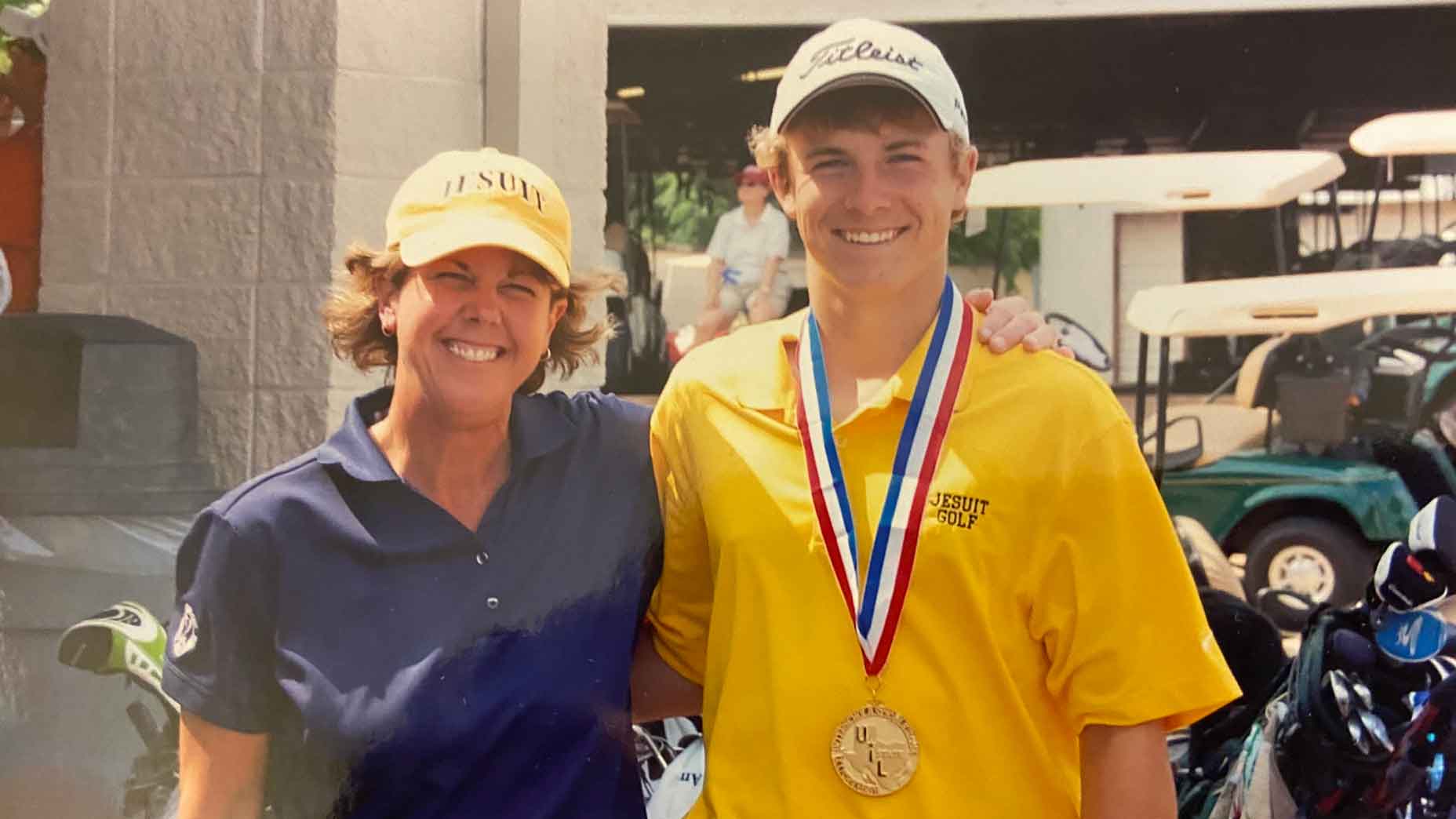Golf unfolds on a continuum. The game’s teachers, coaches and players all hand down their experiences, one generation to the next. In the late 1970s, Cathy Hanlon was the only girl on the otherwise all-boys golf team at Palos Verdes High, in the horse country of Los Angeles County. Her coach was her English teacher, Mr. Wilton. Bob Wilton wasn’t a scratch player or anything like it, but he knew how to make the kids feel good about themselves. Go Sea Kings — you’re all special.
Later, at SMU in Dallas, Cathy’s coach was Earl Stewart, who once beat Arnold down the stretch to win a Tour event. Coach Stewart was terse and intense. He was Mr. Wilton’s opposite. But he made Cathy a better player too. He took his cues not from The Power of Positive Thinking but (so it seemed) from the Marine Corps manual. You’re a Mustang — don’t embarrass us.
Both coaches were in Cathy’s head when she took her talents to the LPGA in 1983, straight out of college. She had a successful decade-plus career, chiefly as Cathy Marino. She never won, but she made more money than she spent. Every pro’s goal.
Later, she became the golf coach at Jesuit College Prep, an all-boys high school in Dallas. Cathy finds herself using things she picked up from Kathy Whitworth. From Stan Thirsk, Tom Watson’s legendary teacher, with whom she took lessons. From Coach Stewart. And, of course, from Mr. Wilton.
One of her players, young Jordan Spieth, was particularly responsive to Coach Cathy’s messaging, straight out of the Good Vibrations School of Golf Psychology. Jordan never met Mr. Wilton. Still, he shaped him.
“My number-one job, with all my players, is to make them feel good about themselves, to lift them up,” Cathy told me recently. “Mr. Wilton made me feel like I was really good, and that’s what I try to do. But it’s funny with boys. They don’t want to be complimented unless you really mean it. So you have to really mean it. And that’s how you build their confidence.”
She knows that the game evolves, as does coaching and teaching. As a competitive player, she was afraid of the woods.
She prized straight. Her players prize long and are afraid of nothing. She saw in Jordan’s first tournament that there was no pin he wouldn’t go for, and it was then she started keeping a Jordan Spieth Greatest Hits list. Now she tries to play with the fearlessness she sees in her players. The teacher as student.
Every golfer, Cathy says, needs coaching. Every golfer needs encouragement. “With Jordan, I’d tell him all the time, ‘You’re really good,’ ” Cathy said. “He knew he was, but he still liked hearing it. Then, with less talented players, you find something they do well, and you build on that.”
On every team, certain players emerge as informal surrogate coaches. It’s a helpful thing, because you never know what message will reach which player. Spieth was one of those self-appointed coaches. He could shoot 33 on any course the team played. He didn’t expect his fellow players — Cathy’s son, Jimmy, among them — to go that low for an after-school nine. He did expect them to try their best: “Can you concentrate? On every shot? Concentrate!” Shades of Earl Stewart.
Spieth graduated in 2011. But on every team, a Spieth, of a kind, emerges. It takes a village, it really does. Marino has been the Jesuit Prep coach for 18 years and in those years the Rangers have won their district title 10 times.
Cathy was the AJGA girls player of the year in 1978, the inaugural year for the award. Jordan was the AJGA boys player of the year in 2009. Two lifers. If there’s one thing we lifers can say, it’s this: We’re always trying to learn something new. And that something new is always right there, an apple on a limb that’s just out of reach. All you need is a ladder.
We can all — judiciously! — impart something to those coming up in the game. (“Maybe you want to leave some of those headcovers in the car? ’Cause they’re just weighing you down, sister.”)
In 2015, Cathy’s team was going to the Texas state golf tournament for independent schools for the first time in several years. One day that spring, during practice, the reigning Masters champ came rolling up in a golf cart. Jordan borrowed a kid’s club, played some shots, talked to the boys. The coat was in his car. It was that close. The team went to states jacked. I asked Cathy if, after a half century in the game, she could summarize the essence of the game. What makes a golfer a golfer?
“You have to be honest with yourself,” she said. “You’re not going to get better if you’re not. Golf is a humbling game. You have to be tough enough to pick yourself up and keep at it.”
Grit comes from inside. Encouragement comes from Cathy. Find your Cathy.
